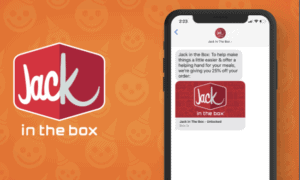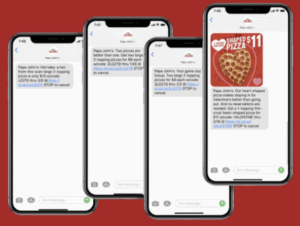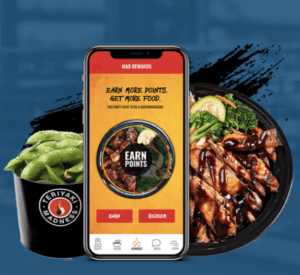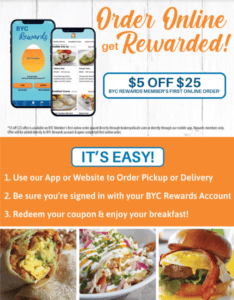What is Hyper-personalization
Hyper-personalization is the usage of large amounts of data and predictive analytics to provide a directly tailored experience to your customers. While personalization is deemed as the incorporation of personal and transactional information like name, gender, and purchase history, hyper-personalization goes one step further and utilizes behavioral and real-time data to create highly contextual communication that is relevant to the user.
So, where are we getting this data? We’re getting it from the individual customer as they interact with the campaigns and offers, crafting unique personas for each. And with the right loyalty partner, you can house, analyze, predict and communicate to these users in a personal way with each engagement opportunity.
In the new frontier of the customer experience, the true measure of effective personalization will be a brand’s ability to understand individual shoppers’ current contexts and deliver precisely what they’re looking for, in the moment of need. Whether you are trying to drive a specific outcome like an incremental visit or letting user data drive your actions in automated ways like a personalized push notification, data should steer your campaigns to make the experience feel more 1:1, more conversational.
Why is Hyper-personalization Important For Restaurants & C-Stores
The benefits of hyper-personalization are countless. But at its core, it reduces the effort required by customers to get what they are looking for by removing any obstacles in the sales funnel, which leads to an uncluttered and simplified experience. Hyper-Personalization is more involved, complex, and valuable than traditional marketing because it goes beyond basic customer data.
Restaurants and c-stores that utilize hyper-personalized approaches are able to market to their guests based on what they like to eat, what they like to see, and what they want to experience. And by giving them what they want and inspiring action from them, you build a relationship. The more you engage with customers as individuals rather than faceless statistics, the more you can learn about each of their interests. That knowledge can help you refine your offers and build a better customer experience, leading to stronger guest loyalty.
How Marketers Can Create Hyper-personalized Campaigns
So we have the why now; let’s explore the how. How can we as marketers use tools such as our loyalty program to drive hyper-personalization:
6 Tips For Creating Hyper-personalized Campaigns
1. Increased Conversions:
 One of the most significant advantages of leveraging hyper-personalization is enhancing overall conversion rates. Driving conversions from one channel to another helps engage more audiences that makeup the sales funnel and become loyal customers. This is particularly important if a guest has long been part of a more traditional channel like an EClub and is used to your past brand messaging. Over the years, customers often get used to their favorite brand’s campaign strategies and begin tuning them out as noise. Spark a relationship by building experiences in real-time with devices that are a bit more personal. Their mobile devices. The direct and instantaneous nature of text messaging and mobile apps means that subscribers are not only interested in hearing what brands have to say — they are eager and able to take action immediately.
One of the most significant advantages of leveraging hyper-personalization is enhancing overall conversion rates. Driving conversions from one channel to another helps engage more audiences that makeup the sales funnel and become loyal customers. This is particularly important if a guest has long been part of a more traditional channel like an EClub and is used to your past brand messaging. Over the years, customers often get used to their favorite brand’s campaign strategies and begin tuning them out as noise. Spark a relationship by building experiences in real-time with devices that are a bit more personal. Their mobile devices. The direct and instantaneous nature of text messaging and mobile apps means that subscribers are not only interested in hearing what brands have to say — they are eager and able to take action immediately.
2. Engage Lapsing Customers:
Having lapsing customers is normal for any brand. As consumers progress through your customer journey, it’s not uncommon for some to become inactive after a period. In fact, studies have shown that the average brand loses about 15% of their customers each year. Hyper-personalization can be your best tool to combat attrition and improve customer lifetime loyalty. Create recall campaigns targeting a segment of guests who recently signed up and visited, but have lapsed in recent days. Remind guests of a reward you’ve given them, easy instructions for using the reward, and how to earn points or a visit to encourage usage.
3. Create Engaging Events:
 Connecting with your consumers on a local level, with tempting offers, is a key part of personalization since it engages with your guest in real-time, supporting real-life occurrences, and most of all, provides value either by saving them time, money, or inconvenience. Use data sets to segment and target customers in unique ways, capitalizing on milestones like birthdays, shopping trends, seasonal preferences, grand openings, and localized events.
Connecting with your consumers on a local level, with tempting offers, is a key part of personalization since it engages with your guest in real-time, supporting real-life occurrences, and most of all, provides value either by saving them time, money, or inconvenience. Use data sets to segment and target customers in unique ways, capitalizing on milestones like birthdays, shopping trends, seasonal preferences, grand openings, and localized events.
4. Create Habits for a Lifetime:
 Another way to personalize offers for your guest is to identify purchases by customers on the SKU level and support and encourage specific habitual behaviors. There are three specific strategies to accomplish this. First, try encouraging customers who typically purchase a particular item to try something similar, creating unique opportunities for frequency based on a new flavor profile. Or direct customer behavior to a new line item, say target a consumer group who never purchased dessert and offer them free fresh-baked cookies with their next order, driving new SKU items with excellent margins. Last, but not least, try building a tier loyalty structure that rewards with points based on frequency and/or by SKU item. This has elements of gamification that can help drive additional habitual behaviors and increase customer lifetime value.
Another way to personalize offers for your guest is to identify purchases by customers on the SKU level and support and encourage specific habitual behaviors. There are three specific strategies to accomplish this. First, try encouraging customers who typically purchase a particular item to try something similar, creating unique opportunities for frequency based on a new flavor profile. Or direct customer behavior to a new line item, say target a consumer group who never purchased dessert and offer them free fresh-baked cookies with their next order, driving new SKU items with excellent margins. Last, but not least, try building a tier loyalty structure that rewards with points based on frequency and/or by SKU item. This has elements of gamification that can help drive additional habitual behaviors and increase customer lifetime value.
5. Use New Channels to Drive Connections:
 It is more important than ever to evolve our strategy into new channels, to support our new reality. That means optimizing on new behaviors like curbside pickup, adding drive-thru options, online ordering, and contactless payment. Remind your customer that your brand offers easy ways to make purchases that are seamless, convenient, and deliver ease to their life. Provide value through communicating these options and rewarding users when they make habitual shifts. With these new channels, brands can develop authentic loyalty experiences that are hyper-personalized to each customer’s needs and interests.
It is more important than ever to evolve our strategy into new channels, to support our new reality. That means optimizing on new behaviors like curbside pickup, adding drive-thru options, online ordering, and contactless payment. Remind your customer that your brand offers easy ways to make purchases that are seamless, convenient, and deliver ease to their life. Provide value through communicating these options and rewarding users when they make habitual shifts. With these new channels, brands can develop authentic loyalty experiences that are hyper-personalized to each customer’s needs and interests.
6. Build Richer Segmentation Journeys:
The idea is to segment customers based on their last purchase, how often they’ve purchased in the past, and how much they’ve spent overall. All three (recency, frequency, and spend) have proven to be effective predictors of a customer’s willingness to engage in marketing messages and offers. Craft messaging that is customized to their preferences and offer personalized promotions that drive higher lifetime value by improving any one of the three predictors. By encouraging and rewarding your customer, you improve the customer experience and deliver on your loyalty promises.
Here at Punchh, we believe that loyalty is at the heart of building a genuinely hyper-personalized journey. Helping you identify your target consumer, deliver thoughtful campaigns, and drive higher customer lifetime value. With hyper-personalization, the end goal is to know your customers on a 1:1 basis through their purchasing history and evolving customer profile data and deliver the campaigns that make sense to them at just the right moment.
In 2019, the main goal of marketing was to ensure you had the right blend of static and digital campaigns; customer experience was left to the front line and the guest services team. Brands didn’t feel the need to know their customers on a 1:1 basis; they already had models and general stereotypes on who engaged with their businesses. And success was simple, the more you could spend, the more likely you could get them through your front doors.
Then the pandemic hit, and everything changed.
The last year has been beyond tough for industries across the nation. Yet, despite the hardship, it also has managed to push operators to take a fresh look at their tactics and goals. This has ultimately created a revolution within the hospitality industry and evolved how c-stores and grocery chains have traditionally looked at their consumers. Marketers have been at the forefront of this change, driving innovation by prioritizing new go-to-market strategies and engagement channels. As brands truly up their game, integrating their tech stack and continuously refining their loyalty programs, new traffic patterns and trends are painting an increasingly clear picture; consumers react less to traditional factors such as menu options, four-wall aesthetics, and more to hyper-personalization marketing efforts.
Ready to take the first step? Check out our recent webinar on how you can improve the customer experience by carefully crafting hyper-personalized campaigns. We also invite you to contact one of our loyalty experts to schedule a 1:1 demo of the loyalty platform that powers many of the top brands like Casey’s, Blaze Pizza, Fazoli’s, Chuck E. Cheese, Jack and the Box, and more!
Stay in the know. Subscribe to our bi-monthly newsletter to receive proven loyalty strategies, offer management techniques, and new trends in your industry. Sign up today!